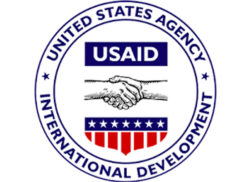
The Health Informatics Governance and Data Analytics (HIGDA) is a five-year project funded by the United States Agency for International Development (USAID) and mandated to support the Kenyan Government’s health sector, as well as strengthen national and county organisational and management capacity in governance, health informatics, data analytics, monitoring, evaluation, learning and accountability.
Through training, HIGDA empowers county health information officers on the use of geographical information system (GIS) in analysis and presentation of health data. A review by participants on integration of GIS in healthcare provision revealed that the training has enabled the health officers to approach routine tasks in ingenious ways with corresponding positive outcomes.
According to the communications team at the Jomo Kenyatta University of Agriculture and Technology (JKUAT), one of the partners in implementing the project, HIGDA focuses on mapping the distribution of health facilities as well as clients; ground the correlation between diseases and their respective causes; besides generating trends and forecasts of disease prevalence in the counties.
This is in the spirit of strengthening institutional capacity in Kenya’s health value chain, which will in turn catapult the enrollment and service provision of UHC.
Historians will probably note that December 12, 2017 was a critical moment in Kenya’s development agenda.
It is on this date, at the Kasarani Stadium in Nairobi during Jamhuri Day celebrations, that President Uhuru Kenyatta announced what he calls the Big Four Agenda, This entails expansion of manufacturing, affordable housing, affordable healthcare through Universal Health Coverage for all by 2022 and food security. Pundits agree that since the first president, Mzee Jomo Kenyatta declared that the newly-independent country would seek to slay disease, poverty and ignorance, few of his successors have defined such an elaborate plan or roadmap to development.
Indeed, the four pillars of President Uhuru Kenyatta, which will cement his legacy if he achieves them in his second and final term, are simple but a masterstroke. They are only four, but with scrutiny you will find out that they answer almost all aspects of the human being’s hierarchy of needs. In their entirety, they will ensure that Kenyans will be healthy, have food on the table, live decently (if affordable housing will cover all aspects of life including sanitation), and with expanded manufacturing, have more money in their pockets. The many unemployed youth will get jobs in various sectors.
But will achievement of the Big Four Agenda be easy, especially UHC? This remains to be seen. When it comes to delivery and attainment of UHC, the government, and indeed all the sector players including private sector, NGOs and civil society, must adopt technology to simplify, ease and expedite health and medical services.
Some people argue that technology, and indeed artificial intelligence, will replace humans at work. This is true to some extent, but ultimately technology improves lives.
According to a 2016 study by The Global Future of Work – The Future Labour Force: Impending Demographic Shifts Are Shaping 2025’s Labour Outlook – most jobs as we know them today will be obsolete by 2025, as artificial intelligence replaces people. However, experts agree that as this happens, the losers will in time innovate so as to capitalise on the new wealth created by technology.
And as the report notes, in 2025 most business leaders will be digital natives, that is the generation born during the era of tech and digital who are able to adopt to new technologies faster. There will be new jobs like cyber security experts, engineering psychologists, neuro implant technicians and virtual healthcare specialists.
As a country, we have no choice but to move with the rest of the world, a world that is already having robots assisting in surgery, a world that is designing autonomous or self-driven cars. But we must align this with education, one that is flexible, adaptive and unstructured to avoid what techies call grand mothering – putting oneself to extinction – in order to ensure that the digital natives, or nomads, are well attuned to technological advances.
